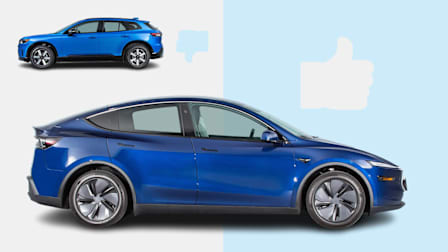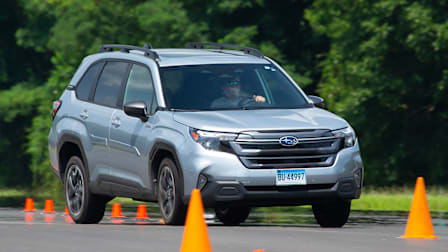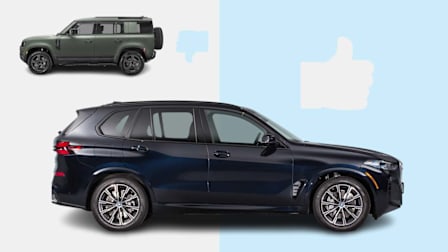How Well Do New Cars Avoid Front Collisions?
New IIHS tests show that many of today’s vehicles are better at preventing higher-speed crashes, but there’s still room for improvement
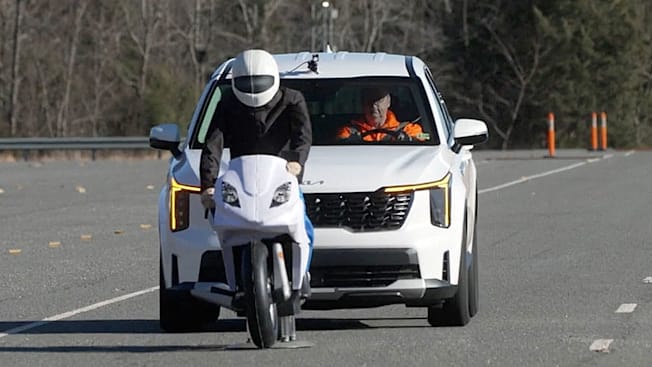
New testing from the Insurance Institute for Highway Safety shows that the automatic emergency braking (AEB) systems found in many new vehicles can better prevent crashes at higher speeds. The results show a major improvement over prior years’ tests. Despite this progress, however, several tested models earned Marginal and even Poor marks, failing to avoid crashes at higher speeds and with motorcycles.
Top Performers in the Latest IIHS AEB Test
These 15 vehicles achieved the highest score of Good in the IIHS testing.
• 2024 Acura ZDX
• 2024-2025 BMW X5
• 2024-2025 BMW X6
• 2024-2025 Cadillac Lyriq
• 2024-2025 Chevrolet Blazer EV
• 2025 Genesis GV80
• 2024 Honda Prologue
• 2024-25 Hyundai Santa Fe
• 2024-25 Kia EV9
• 2024-25 Kia Sorento
• 2024-25 Lexus NX
• 2024-25 Mercedes-Benz E-Class with optional system
• 2025 Subaru Forester
• 2025 Toyota Camry
• 2025 Toyota Crown Signia
"Avoiding crashes from higher speeds is key to reducing fatalities, injuries, and vehicle damage,” says Jennifer Stockburger, director of operations at CR’s Auto Test Center. "Higher speeds also mean that drivers have less time to react and vehicles take longer to stop, so the additional help from technology has the potential to provide an even greater benefit."
The 2025 Acura MDX, 2025 Genesis G80, 2025 Honda HR-V, 2024-2025 Hyundai Sonata, 2023-2025 Jeep Wagoneer, and 2025 Mazda CX-50 earned the second-highest score of Acceptable, as did the 2024-2025 Mercedes E-Class when tested with its standard AEB system.
AEB uses sensors to detect a potential crash and automatically apply the brakes—often more quickly than a human driver can—to avoid a collision entirely or reduce its impact.
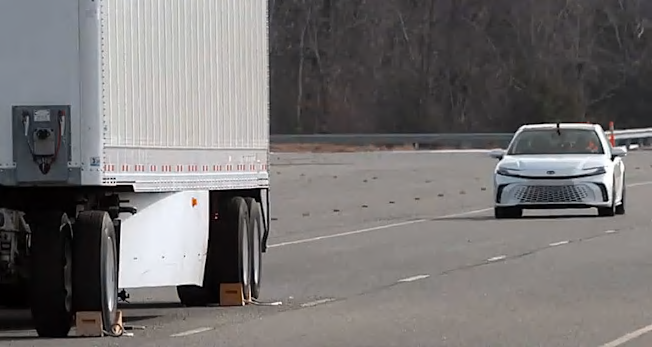
Photo: IIHS Photo: IIHS

Photo: IIHS Photo: IIHS
The National Highway Traffic Safety Administration recently finalized a rule that would require all vehicles to have AEB systems capable of avoiding rear-end crashes at speeds up to 62 mph and detecting pedestrians regardless of lighting conditions by 2029. However, in January 2025, an auto industry trade group filed a suit against NHTSA arguing that the new standard is technologically unfeasible; NHTSA also delayed the rule’s effective date as part of a government-wide regulatory freeze under the new administration, a move that jeopardizes safety as some vehicles’ AEB systems lag behind others, says Cooper Lohr, senior policy analyst for transportation and safety at Consumer Reports.
“Unfortunately, the pending lawsuit threatens to slow down progress at a time when more than 40,000 lives are lost on U.S. roads each year,” he says. “Consumers should be able to trust that any new car they buy will come with reliable and protective AEB, just like it comes with seat belts and airbags.”
When searching for your next new or used car, we encourage you to prioritize a model that comes with AEB. And better yet, one with a system proved to provide protection based on IIHS’ tests.

















